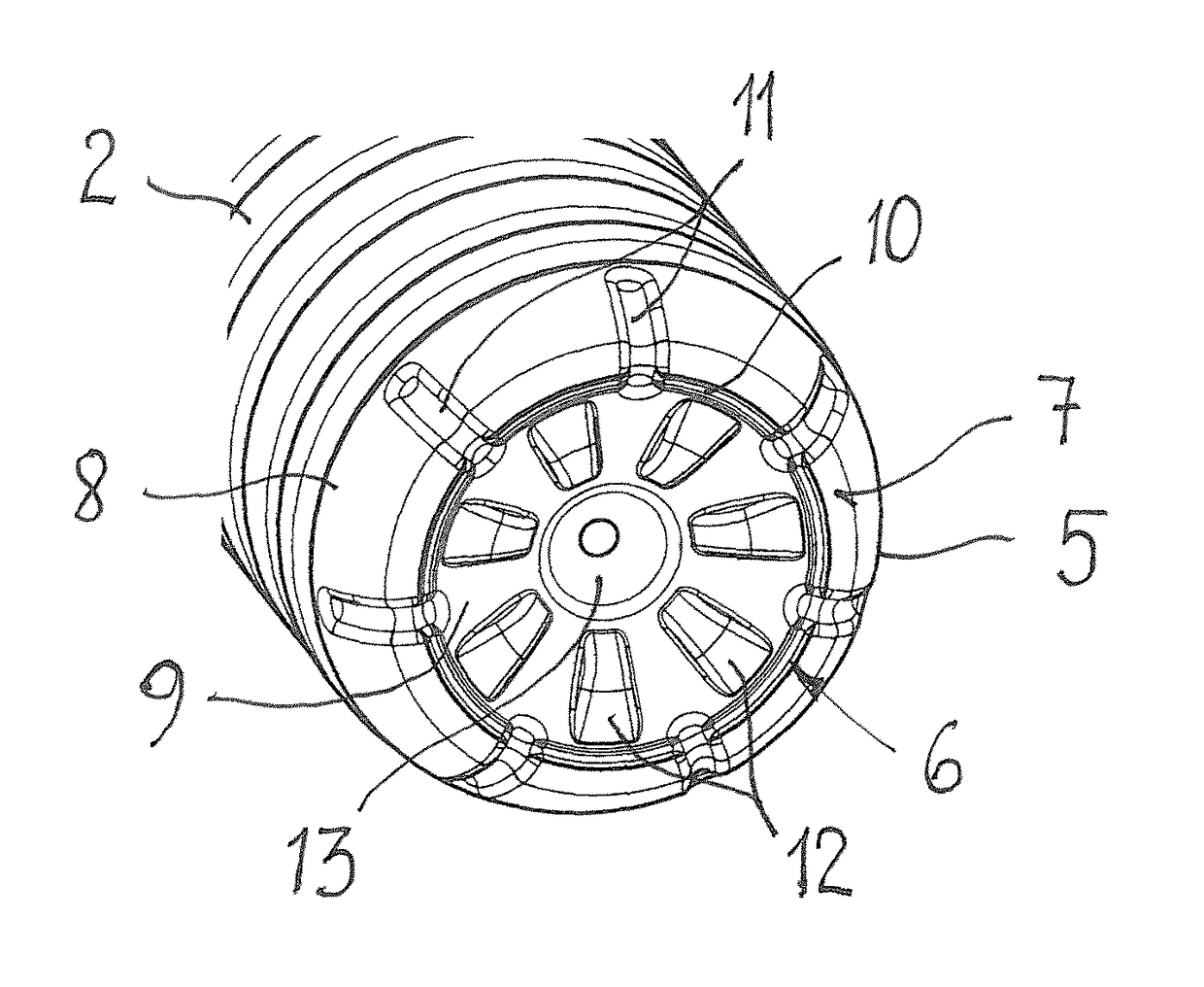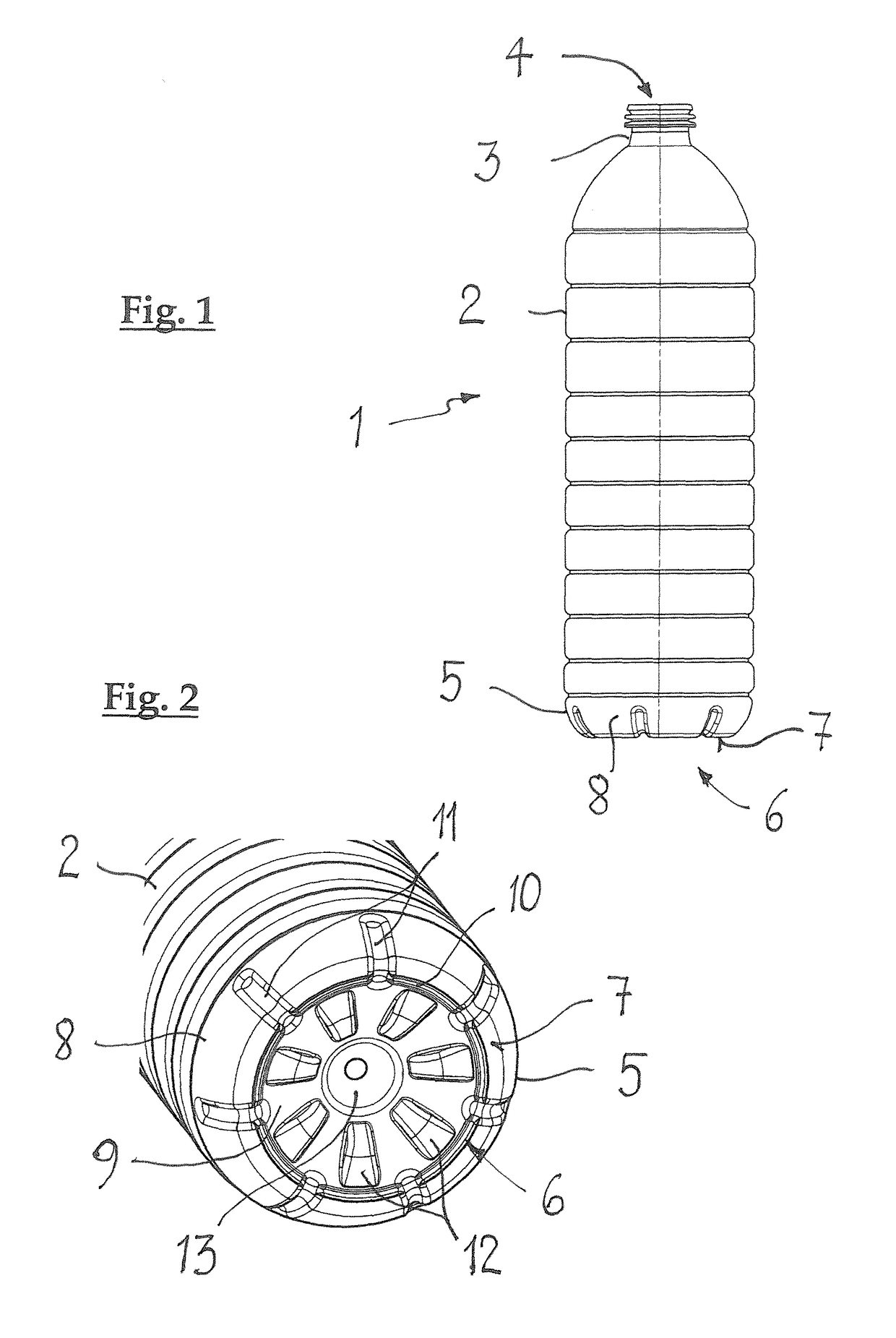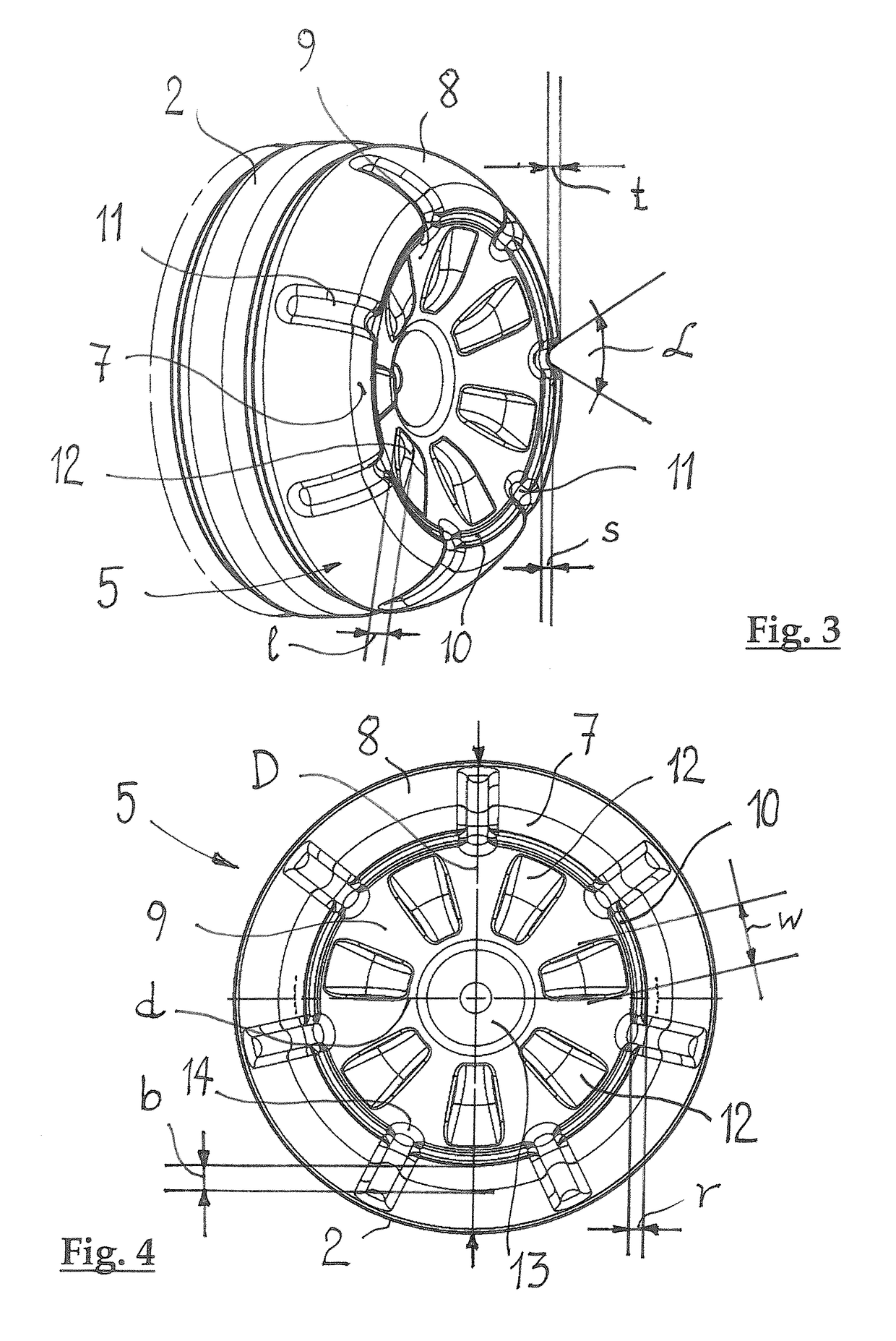Plastic container
a plastic container and container body technology, applied in the field of plastic containers, can solve the problems of reducing the shelf life of decanted products, oxidation of contents, and slight overpressure in the plastic container,
- Summary
- Abstract
- Description
- Claims
- Application Information
AI Technical Summary
Benefits of technology
Problems solved by technology
Method used
Image
Examples
Embodiment Construction
[0018]Exemplary embodiments of this disclosure can address drawbacks of known plastic containers, such as plastic bottles. A plastic container can be provided for storing liquid products under a slight overpressure, whose container body is available to a large extent in its entirety for labeling. The plastic container can have a bottom section that has, for example, as large a platform as possible. It is to be possible to eliminate feet in the edge area of the bottom section. Moreover, additional material savings in the production of the plastic container can be met.
[0019]A plastic container, according to an exemplary embodiment of the disclosure for storing liquid products under a slight overpressure, has a container body with a longitudinal axis, to whose one longitudinal end a container neck is connected, which neck is equipped with at least one pour opening. A bottom section is connected to the other longitudinal end of the container body, which bottom section has a container bo...
PUM
 Login to View More
Login to View More Abstract
Description
Claims
Application Information
 Login to View More
Login to View More - Generate Ideas
- Intellectual Property
- Life Sciences
- Materials
- Tech Scout
- Unparalleled Data Quality
- Higher Quality Content
- 60% Fewer Hallucinations
Browse by: Latest US Patents, China's latest patents, Technical Efficacy Thesaurus, Application Domain, Technology Topic, Popular Technical Reports.
© 2025 PatSnap. All rights reserved.Legal|Privacy policy|Modern Slavery Act Transparency Statement|Sitemap|About US| Contact US: help@patsnap.com



